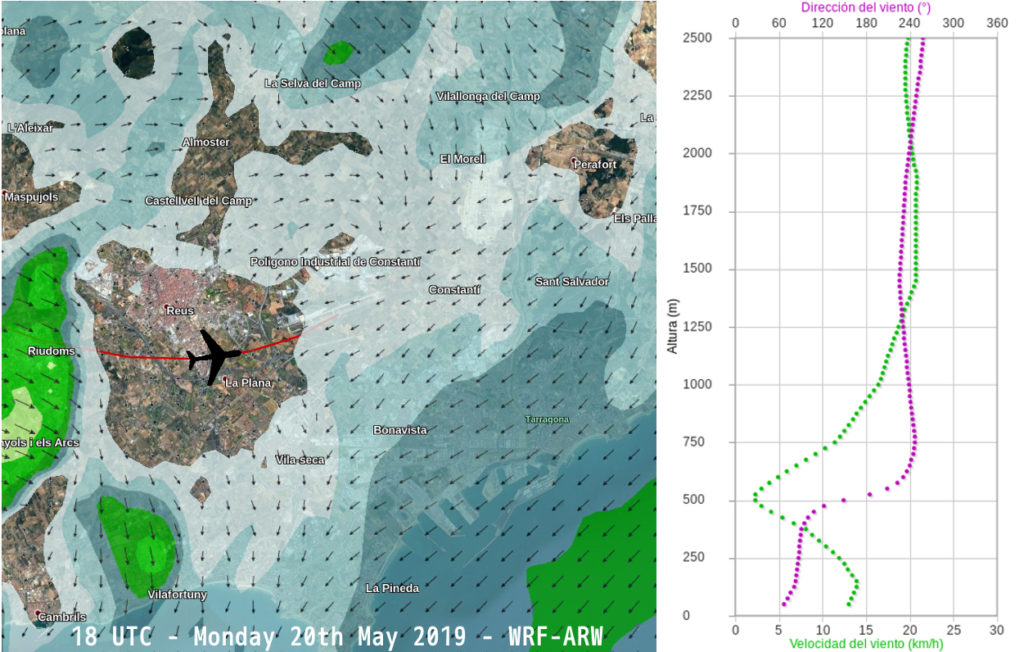

Aeronautical meteorology is an essential element of the complex system that constitutes Air Traffic Management (ATM). Meteorology conditions all aspects of ATM operations as well as helps to improve safety and efficiency during air traffic control (ATC) operations.
What influence does meteorology have on airport operations?
The possibility of forecasting adverse and/or extreme weather situations can become a very useful tool to anticipate possible problems and incidents that may affect air traffic management. For this reason, the weather forecast becomes a key element when making decisions to diagnose adverse situations and thus activate preventive actions to try to avoid and mitigate the possible negative impacts caused by the upcoming weather conditions. For example, wind forecast as well as other meteorological variables at different flight levels can help you find the most appropriate route between an origin and a destination. Convective precipitation forecast can locate convective cells with high vertical velocities that can pose a danger to aircraft that are close to it. Severity of turbulence and ice forecast helps when planning the flight route to locate avoid points.
According to studies carried out by the (Aviation Accident and Incident Database) and Plane Crash Information aeronautical accidents due to meteorological causes were reduced from 31% in the 1990s to 24% during the period from 2003 to 2007. Currently, accidents in aviation due to adverse weather conditions are around 17%. Likewise, adverse weather conditions are the main cause of aerial accidents and incidents that occur during the descent phase, initial and final approach, landing, initial and final ascent, and takeoff phases. Even though the percentages of incidents and accidents due to weather are decreasing year after year, the impact of meteorology on aeronautical activities is still very high, both from the point of view of aviation safety and the economy.
How can management and aviation security be improved?
Sudden changes in the direction and speed of the wind, the existence of wind shear, situations of poor visibility and other adverse weather conditions are factors to be considered when it comes to ATM operations. That is why having information is essential for the planning and security of air operations both in airports and on-air routes. Therefore, it is necessary to provide ATMs with predicted meteorological information, using the most advanced numerical modeling techniques of time (NWP).
The mastery of mesoscale meteorological modeling tools and the existence of our own high-performance computing system has allowed us to develop a complete methodology for adapting the high-resolution meteorological model Weather Research and Forecasting (WRF-ARW) to the areas of interest.
Due to the different spatial resolutions with which ATM systems operate, it is of vital interest for them to be able to have accurate information on meteorological conditions both at a synoptic scale and at smaller scales. In this way, from METEOSIM we are able to define two meteorological forecast services; medium-range and regional scale for the cruise phase, where storms and turbulence defined as clear-air turbulences (CAT) are the most critical variables, and short-range and local scale for the phases of approach and takeoff.

Composition of the final approach path to the airport of Reus and the forecast of the wind gust, and graph of the vertical profile of the direction and wind speed. Forecast for May 20, 2019 at 18h UTC performed with the WRF-ARW model at 1 km of horizontal resolution.


